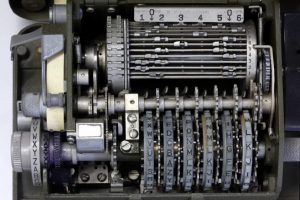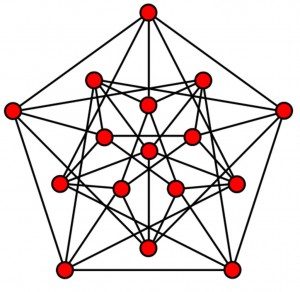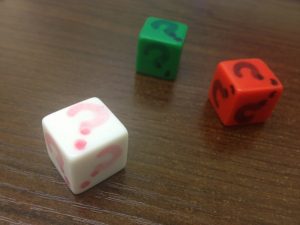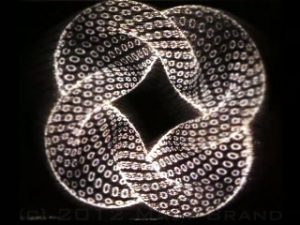In-Person Field Trip Activities
All MoMath field trips feature hands-on, grade-appropriate activities illuminating the joy of mathematics to students of all mathematical backgrounds!
Educator-Led: Classroom Sessions | Activities
Collaborative Construction Experiences
Educator-Led Classroom Sessions
Cryptography (grades 4 through 12)
By hiding messages in shapes, gibberish, and number codes, cryptography has allowed people, from the time of the ancient Greeks through today, to safely transmit secrets. Court intrigue, star-crossed love, and war have all benefited immensely from this method of communication. These days, cryptographers have traded the cipher disk for the computer screen, but cryptography still influences our lives in covert ways. By harnessing statistics, abstract algebra, and other branches of mathematics, cryptography lets us breathe easier when we go to an ATM, create a password for our computer, or s end money electronically.
end money electronically.
Lessons available:
- The Secrets of Telling Secrets (grades 4 through 9)
Students are introduced to the substitution cipher, which hides messages by replacing letters or groups of letters with other letters or groups of letters. Working with their classmates, students practice making and breaking different ciphers.
- Keeping Secrets in Public (grades 10 through 12)
Students are introduced to public key cryptography, which allows the public to encrypt but not decrypt, and only gives select individuals the decryption key. This type of cryptography solves the problem of passing along the key easily and securely. Using arithmetic and network graphs, students will explore this complex and fun type of secret-keeping!
Geometry (grades Pre-K through 4)
The concepts of shape, symmetry, and pattern lie at the foundation of mathematical thinking, yet they can lead to the forefront of mathematical knowledge. Programs exploring these concepts are used to guide even the youngest students in activities designed to encourage creativity and exploration using basic properties of polygons.
Programs exploring these concepts are used to guide even the youngest students in activities designed to encourage creativity and exploration using basic properties of polygons.
Lessons available:
- Shape Shifters (grades Pre-K through 2)
Shapes are all around us, and form the basic building blocks of modern life. Using wooden squares, rectangles, rhombi, trapezoids, and hexagons, students will discover how shapes are different from each other and how mathematicians identify and name them. Interactive activities and games will teach students about geometrical symmetries and how to construct polygons with many sides, including the tetracontakaihexagon!
- Tessellation Station (grades Pre-K through 4)
From nature to art to architecture, tessellations — or tiling patterns — offer a creative way to understand geometry outside the classroom. Students will use the symmetries of polygons to discover surprising and beautiful patterns as they learn about infinite tessellations of the plane.
Graph Theory (grades 5 through 12)
A network graph is a simple mathematical object that is useful for studying connections between absolutely anything! Graphs can help us study everything from the internet to transportation networks, and from ecological systems to groups of friends. Wherever things are connected or related to each other, graph theory is there. The programs offered in graph theory offer different introductions to the subject, highlighting the intuitive and creative problem solving that makes graph theory so much fun.
Lessons available:
- Bridging the Map (grades 5 through 8)

Students are introduced to graph theory via the original problem it was developed to solve: taking a scenic stroll over all seven of the bridges of Königsburg, Prussia. Working with their classmates, they will discover the mathematics of constructing paths on graphs, encountering both classical problems as well as problems that remain unsolved today!
- Graphs of the Rainbow (grades 5 through 10)
Working in small groups, students learn the many shades of graph coloring problems and how they relate to some real-life situations. They learn how to interpret a map as a certain type of graph by studying interesting examples and making simple drawings, leading to an appreciation for one of the most important principles of graph theory!
- Graph Games (grades 9 through 12)
After a quick intro to network graphs, students learn how to play a competitive game involving graph coloring. With this simple foundation, students are then introduced to an interesting problem that has not yet been solved, in a niche area of research where graph theory meets game theory.
Probability (grades 5 through 12)
Probability is a way to quantify the likelihood of an event occurring. Students explore this concept through guided interactive experiments and challenges. Some prior exposure to basic probab ility and familiarity with adding fractions is assumed for these programs.
ility and familiarity with adding fractions is assumed for these programs.
Lessons available:
- Crazy Dice (grades 5 through 8)
Once students find the probability of rolling a given sum with a pair of standard dice, they are challenged with finding a different way to number their dice to get the same probabilities. Crazy!
- Evening the Odds (grades 9 through 12)
The probability of rolling different sums with a standard pair of dice depends upon the sum in question. This activity guides students to find ways to renumber their dice so every sum appears with the same probability. But then, what sums are possible to fit into this scheme? How many different sums can be rolled with equal likelihood? The answers to these questions and more are found in this activity.
Topology (grades 3 through 12)
Sometimes called “rubber geometry,” topology is the study of properties of objects that don’t change even when those objects are twisted, stretched, shrunk, and bent. Circles become squares, flat becomes curved, and coffee cups become doughnuts, in this amazing branch of math.
Lessons available:
- Möbius Madness (grades 3 through 6)
Students construct fascinating topological objects such as Möbius bands, discovering their fundamental patterns and structures. Hands-on activities lead students to discover the surprising properties hidden around every twist and turn!
- Tied in Knot Theory (grades
 5 through 9)
5 through 9)
Students are introduced to the mathematical theory of knots via fun, hands-on, group activities. By tangling and untangling some rudimentary knots, students will discover what it means for knots to be the same or different, topologically speaking, and will get a taste for the problems that knot theorists work on.
- Topological Tic-Tac-Toe (grades 7 through 12)
The familiar game of tic-tac-toe becomes fun and challenging when we play it on alternative topological surfaces. The typical 3×3 game board is enhanced by gluing together pairs of opposite edges together in various ways, making for more interesting games and mind-bending playing spaces. Students will learn to appreciate the ins and outs of these new objects as they develop strategies to master the mathematically enhanced games.
Educator-Led Exhibit Activities
Roll up your sleeves for these 45-minute activities with a MoMath educator, during which students will take a deeper dive into the some of the exhibits at MoMath on Fifth.
- Solve for X: an exploration of operations using exhibits such as Sea Saw, Math Unleashed, and Organ Function Grinder (for grades 5 through 12)
- The Third Dimension: exploring 3D geometry using exhibits such as Ring of Fire, Polyscope, and Structure Studio (appropriate for all grade levels)
- Symmetry Playground: a playful experience with symmetry using exhibits such as Self Reflections, Miles of Tiles, and PolyPaint (for grades K through 8)
- Cryptography Scavenger Hunt: explore cryptography and break secret codes to find your way around the exhibits at MoMath on Fifth (for grades 3 through 12)
Collaborative Construction Experiences
Work together during these 45-minute, collaborative group construction experiences. Activities are appropriate for all grade levels.
- Leonardome: Build a giant dome in various patterns based on the ingenious designs of Leonardo da Vinci
- DoDecArt: Learn about the many features of the dodecahedron and create impressive dodecahedral structures
- Play Truchet Challenge: Create and match intricate patterns while developing visual and mathematical perception
- Multi-Morphing Megaplex: Use geometric shapes to build a fractal structure and discover the math and beauty of the Sierpinski Tetrahedron

